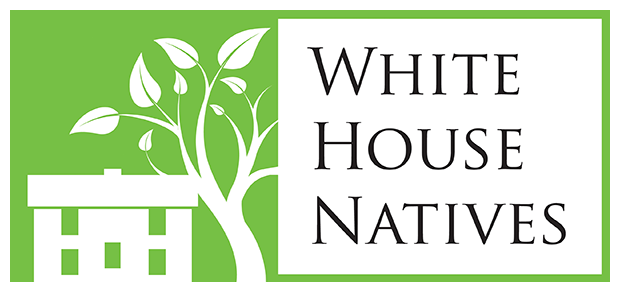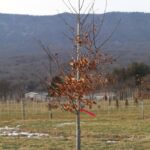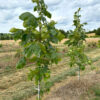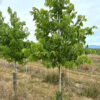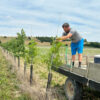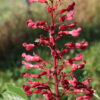February’s featured native is the swamp chestnut oak, Quercus michauxii, also known as cow or basket oak. Like the similar chestnut oak (Q. montana), Quercus michauxii is a member of the white oak subfamily (Quercus sect. Quercus). The swamp chestnut oak is a creature of lowlands and river valleys, unlike its cousin which inhabits drier and more mountainous terrain. Quercus michauxii is native to the southeastern coastal plain from southeast Pennsylvania to north Florida and west to the Piney Woods of Texas and northward up the Mississippi River valley to the confluence of the Ohio River, overlapping to a large extent the range of the overcup oak (Q. lyrata), which we featured in August 2021.
Despite its name, swamp chestnut oak does not naturally occur in swamplands or other poorly-drained sites; rather it thrives in deep, rich, moist soil, whether on the banks of rivers, edges of swamps, or low rises in marshland. It is tolerant of wide variety of soil types from dense silts to heavy clays to complex loams. In the wild, it is a slow-growing medium to large tree, typically 70 to 100 feet tall at maturity with a strong, tight crown of gently upswept branches. It is often free of branches to 40 feet of height. The national champion of this species is from southeastern Virginia; a specimen with a height of 123 feet, crown of 109 feet and a trunk circumference of 276 inches when measured in 2017.
[Article continues below photos.]
Quercus michauxii features 4-10-inch long glossy, dark-green, obovate leaves, widest beyond the middle, with numerous shallow, rounded lobes. The overall effect is similar to that of chestnut (Castanea). Unlike chestnut oak, the leaves have a fine pubescence on the underside, leading to a greyish-green contrast. It is one of the more consistent oaks in fall color, with leaves turning a deep red. The bark is light grey and rough-textured, with flaky ridges, but lacking the deep furrows of Q. montana. Like many oaks, acorns are borne in heavy crops every 4-5 years, with lighter production in intervening years. The acorns are very large (1-1½ in long) and sweet, lacking the bitterness of many species and as such are favorites of deer, turkey, squirrels, and woodpeckers—and cows, hence one of the common names of the tree in the South. The wood is exceptionally strong yet flexible and splits cleanly; one traditional use was for basket-making. The wood was also used for flooring, posts, wagons, and tool handles. The species is still commercially farmed for lumber.
In the landscape, swamp chestnut oak can serve as a specimen in larger spaces and is especially useful for swales and screening wetlands. While preferring acidic, moist loams in full sun, it also grows well in a variety of soil types and is tolerant of both drought and occasional flooding when established. It also grows in compacted soils that are difficult for many other trees. Q. michauxii is a tree best planted at a young age as it develops a strong taproot with maturity. It tolerates pruning well and is not particularly susceptible to the numerous oak diseases and pests. In addition to its value as a source of food for wildlife, it is also a larval host—like many oaks—to several species of butterflies.
White House Natives currently supplies Quercus michauxii in 2”, 2½”, and 3”caliper. It’s a great choice for larger spaces that need an attractive, moisture-tolerant specimen. And its fall color is fantastic; order some today!
